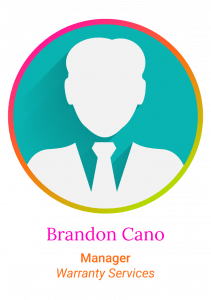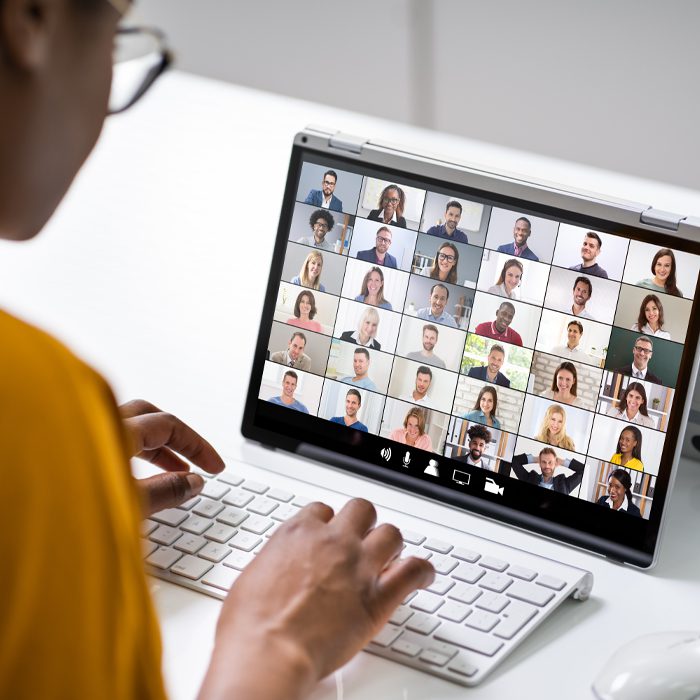5 new technology trends that will help make a better modern workplace
From the metaverse to IT consolidation, asset recovery, and sustainable warranty services, here are the latest end-user computing trends to consider for your organization.

Tech enthusiasts beware! Technology is evolving so rapidly that observers may experience mild-to-severe whiplash trying to keep track of all the latest trends and innovations.
From Web3, blockchains, and NFTs to extended reality (XR), modular computers, and Just-About-Everything-as-a-Service, the past year has taught us the technology of tomorrow isn’t so far away – and it promises to change the world as we know it.
But amidst all the marketing buzz and media hype, how can you wade through passing fads and invest in truly innovative technology? And just as importantly, which technology trends actually help your organization achieve its goals? SHI’s Resource Hub consulted four in-house modern workplace experts to find out.
Fad or innovation – how to tell the difference
If you’re an IT decisionmaker, you know how often your inbox can become cluttered with emails from brands you’ve never heard of promising their newfangled, patent-pending solution is a cure-all for all your business problems.
Like most people, you probably ignore it – and about a hundred similar emails from other brands, too.
But when you’re actively seeking a new solution to overcome your obstacles or achieve your goals, how can you know for sure a new solution isn’t just a passing fad, but something that can bolster your organization in the long term?
 “First, you need to define your pain points and desired business outcomes,” advises Melissa Gwaldis, Principal Architect for SHI’s Advanced Solutions Group (ASG). With over 25 years of IT experience, Melissa has seen it all – from snake oil solutions that quickly fade in and out of existence to fledgling innovations that forever change entire technology sectors.
“First, you need to define your pain points and desired business outcomes,” advises Melissa Gwaldis, Principal Architect for SHI’s Advanced Solutions Group (ASG). With over 25 years of IT experience, Melissa has seen it all – from snake oil solutions that quickly fade in and out of existence to fledgling innovations that forever change entire technology sectors.
“With your priorities in mind, research new solutions and determine for yourself if they can help meet your goals while improving your existing processes. If you can, conduct demos and proofs of concept (POCs) – the data you receive or the results you’ve been promised should be tangible and directly applicable to your unique use cases.”

Michael Hart agrees. As SHI’s Director of End-User Computing Solutions, Michael understands the pressure organizations face to find novel ways to improve their efficiency.
“I work with end-user devices; they’re in many ways the bread and butter of your typical knowledge worker. Nowadays, devices are in warehouses, hospitals, schools, the field, in every vertical you can imagine. How do you manage all these distributed devices in a way that’s streamlined for IT and productive for users? Whether a technology can solve that issue will make it stand out not only as a worthwhile trend, but as a mainstay of innovation.”
Don’t call it a phase – these trends are here to stay
When a new technology is announced, it can elicit whimsy, excitement, or even confusion. But if proven successful, it becomes hard to imagine working without it. According to our experts, these are the solutions that may have started as trends, but have quickly solidified their place as must-have investments for your organization:
1. The metaverse and digital twins
Through seemingly limitless virtual workspaces, the metaverse empowers users to work beyond the typical capabilities of their remote or traditional office. In fact, the metaverse unlocks an entirely new way for organizations to create equitable and accessible work experiences, regardless of a user’s location, language, or ability.
“The metaverse is made up of so many layers and technologies,” Melissa says, “but what really excites me about the metaverse are digital twins.”
Melissa describes digital twins as an online manifestation of a person, place, or thing, enabling organizations to unite and enrich user experiences.
“You can have a digital twin of your global headquarters to deliver onboarding experiences unique to your company culture,” Melissa explains, “or you can create a digital twin of a construction site and simulate in real-time the structural integrity of a project before using any real materials.”
Digital twins can also be three-dimensional avatars of yourself, your coworkers, and even your customers. With features like real-time language translation, audio transcription, and generative AI integration, the metaverse helps you build a modern workplace that’s more interactive, accessible, and present than ever.
2. Device management consolidation
The modern workplace leverages diverse device fleets composed of multiple form factors, OSs, and brands. From phones and tablets running Android and iOS to laptops and desktops running Windows, macOS, Linux, and Chrome OS, organizations want to take full advantage of all the devices at their disposal without overburdening IT teams with cumbersome device management.
That’s why Michael says device management consolidation is making a lasting impact on organizations.
“People want to streamline management,” says Michael. “They want a tool that can manage a dozen different device types at the same time, with minimal extra steps between them. If you can manage your users’ devices, tools, and applications from one place instead of five, you’re going to save your organization a lot of time and money.”
That means people are also shifting how they provision. Through Autopilot, Apple Business Manager, or Zero Touch X, over-the-air provisioning (OTAP) is minimizing the time and labor required to image and deploy devices. A process that once took hours could now be done in fifteen minutes.
3. Sustainable asset disposal, recovery, and repair
The key to increasing a process’ efficiency is to reduce its total touch points without sacrificing its efficacy. Organizations that distributed their workforces at the onset of the pandemic have not only needed to solve how to get new devices in users’ hands, but also how to receive and dispose of the old ones they’re replacing.
 Asset disposal and recovery have historically been time-intensive processes. But according to Adam Kaye, SHI’s Manager of Asset Recovery, organizations can now leverage a better, faster, and more sustainable method for securely disposing of their retired devices.
Asset disposal and recovery have historically been time-intensive processes. But according to Adam Kaye, SHI’s Manager of Asset Recovery, organizations can now leverage a better, faster, and more sustainable method for securely disposing of their retired devices.
“SHI has rolled out a QR code model that completely forgoes the need to send end users a box,” Adam says. “If your user needs to send an old device for decommissioning, they can just bring it to FedEx and scan the QR code. FedEx then ships the device directly to SHI for depot. This removes the need to ship the user a box, for them to ship it back to you, and for you to then ship it to us. From both a time and environmental perspective, that makes a huge impact.”
 Adam works closely with Brandon Cano, SHI’s Manager of Warranty Services. Since the start of the pandemic, the two have seen a rise in organizations relying on trusted partners to remove, decommission, and replace devices not in a matter of days, but in just a few hours.
Adam works closely with Brandon Cano, SHI’s Manager of Warranty Services. Since the start of the pandemic, the two have seen a rise in organizations relying on trusted partners to remove, decommission, and replace devices not in a matter of days, but in just a few hours.
“Every minute of every hour without a working device equates to lost money and downtime,” says Brandon. “That’s why SHI has developed the means to get devices in users’ hands within four hours, the same day, or within the next business day. Organizations need remote workers to be up and running as rapidly as possible, and they’re relying on their trusted service providers to help them achieve that.”
4. Extended reality untethered by the cloud
As a product category, the definition of end-user computing (EUC) is expanding to include not just personal computers and mobile devices, but also virtual reality (VR) headsets and haptic equipment, as well as augmented reality (AR) glasses, projection equipment, and cameras, just to name a few.
All these components and more come together to deliver extended reality (XR) experiences which, similar to the metaverse, aim to expand and evolve our workplace capabilities.
“The metaverse and XR go hand-in-hand,” explains Melissa. “But until now, high fidelity applications on XR devices have been limited by their need to be tethered to a computer. Thanks to cloud computing, organizations can now stream high-powered virtual desktops and experiences to untethered XR headsets.”
Melissa believes this capability unlocks near-endless potential for XR in the workplace. From intuitive training for high-risk tasks such as surgeries and construction to unrivaled levels of multitasking and collaboration thanks to nearly unlimited screen space, XR is, in many ways, redefining what it means to use an end-user device.
5. Generative AI
Dall-E. ChatGPT. Midjourney. By now, everyone has heard of and toyed with generative AI tools, but few organizations have figured out how to fully take advantage of them. Although this technology appears to be in its fledgling stages, important steps are already being taken to make them crucial for how you operate in the future.
Michael says, “Microsoft recently announced Copilot, their AI tool for Microsoft 365. Copilot can help format spreadsheets, create presentations, and more. For knowledge workers, AI tools like Copilot can dramatically boost productivity and eliminate tedium from daily workflows.”
Melissa agrees. She sees AI as beneficial not only in the traditional or remote workplace, but in the metaverse as well. In the same way digital twins can be created for real people and places, a digital human can be created for an AI-driven non-player character (NPC).
“When an organization operates in the metaverse, they can leverage AI avatars to create an evergreen online presence,” Melissa says. “Think of them as the next evolution of support chat bots, digital personal assistants, or even as tour guides during a virtual conference. They can free bandwidth for real-life teams and personalize your digital employee experience.”
How can you convince your organization to invest in technology trends?
When organizations think of technology trends and innovations, it can be hard not to perceive them as cost prohibitive. After all, anything new and trending must also be expensive, right? Not necessarily. The technology trends emerging today are in many ways a direct response to recent economic uncertainty. They aim to increase efficiency, reduce time-sinks, streamline processes, and evolve workplace practices.
As Michael puts it, “In many ways, these trends aim to consolidate. If a process that once leveraged five tools can now be done with one, you’re not just saving time, you’re saving money, too. That’s a compelling reason to invest.”
Adam sees a similar sentiment in the asset recovery space. “Between remote work, the so-called ‘great resignation,’ and mass layoffs, organizations are finding it difficult to reclaim devices. On their own, organizations might see a 30% reclamation rate. But because of how seamless SHI’s QR code model and other integrations are, we’re seeing an approximately 90% reclamation rate for devices in the field. That lets you redeploy, remarket, or recycle more devices than ever, and spend less procuring brand new ones.”
In times of economic uncertainty, organizations need novel ways of remaining disruptive, innovative, and competitive. Key stakeholders within your organization should focus on investments that not only make you more efficient, but also position you for success in the future.
“It’s an unfortunate truth that while some organizations will thrive, others will struggle to survive,” Melissa says. “Digital maturity and resiliency matter. It’s important to discuss with your leadership how these global crises will affect every aspect of your organization – and how you’ll respond. Those who invest in their digital transformation will be able to close gaps and grab market share by introducing disruptive, innovative business models. Those who don’t risk becoming the next Blockbuster.”
Adopt the latest technology with SHI’s experts
Researching, testing, and adopting innovative technology can be an exhaustive process of trial and error – especially if you go it alone.
SHI’s modern workplace experts are here to help you navigate the latest technology trends and pinpoint the solutions that’ll best help achieve your goals. With unrivaled experience and insights backed by industry best practices, our experts are uniquely positioned to help solve what’s next for your modern workplace. Request a complimentary modern workplace consultation today to get enter the future with your best foot forward.




